
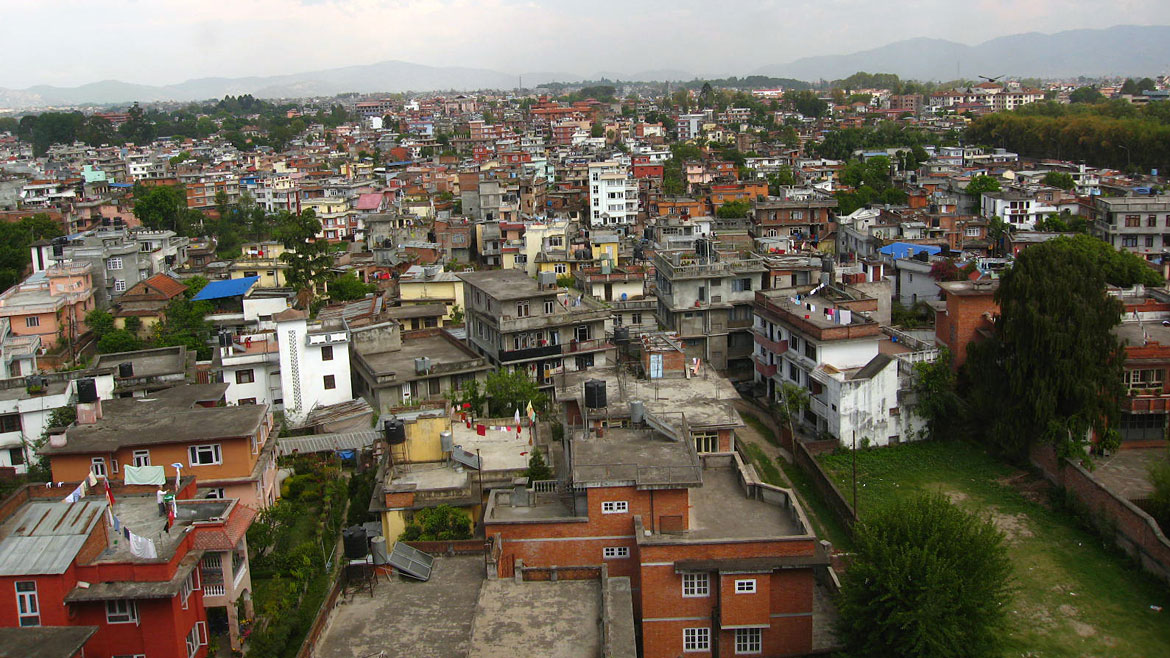
The Carter Center observed Nepal’s constituent assembly elections, which were delayed from the scheduled Nov. 22, 2007, date. The Center’s long-term observers (LTOs) have been deployed throughout the country since March 2007. Currently the only international observation mission in Nepal, the Center’s well–established reputation for professional and impartial observation enables it to gather a wide range of information from diverse actors. The Carter Center has been active in peacemaking activities in Nepal since 2003. Photo: The Carter Center | Carter Center Slideshow (2007)
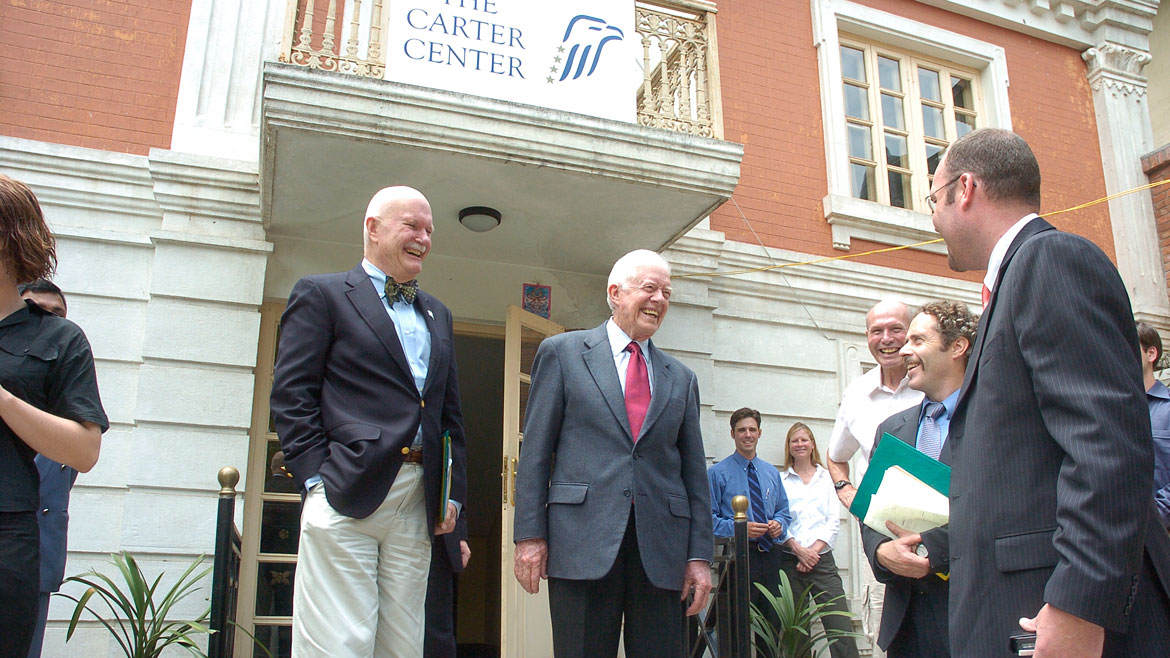
In June 2007, former U.S. President Jimmy Carter visited Nepal to see election progress firsthand and meet with political parties and election officials. Here he talks with former U.S. Ambassador Peter A. Burleigh, senior political analyst for the mission, and others in front of the Carter Center’s office in Kathmandu. In foreground from left to right: Ambassador Peter A. Burleigh, President Jimmy Carter; David Carroll, director of the Carter Center’s Democracy Program; and Darren Nance, Carter Center field office director. Photo: The Carter Center/Sagar Shrestha
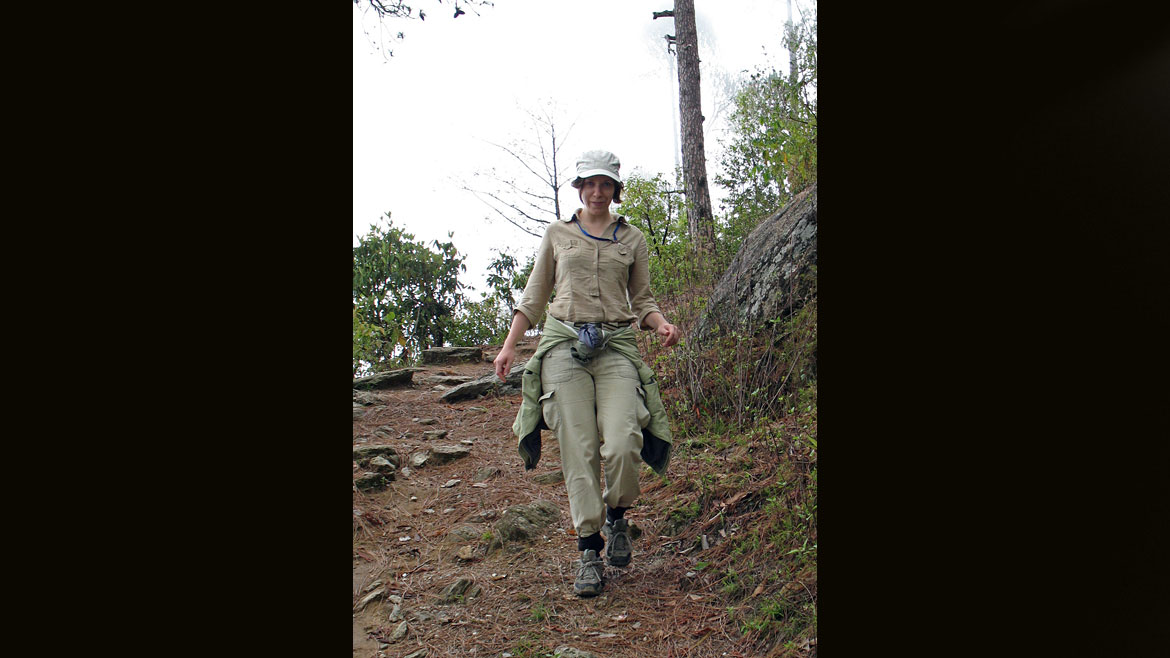
The Carter Center deployed 13 LTOs throughout Nepal in March 2007. Here Stefanie Gross, LTO in southeast Nepal, treks to the headquarters of Khotang, a hill district in Nepal's Eastern Development Region. Because of Nepal’s varied terrain, it is not uncommon for LTOs to start a field trip with a car, continue with a tiny plane, and end with a one–hour to two–day trek. LTOs regularly visit villages throughout their districts to meet with political party representatives, election officials, and civil society. Photo: The Carter Center/Roger Bryant
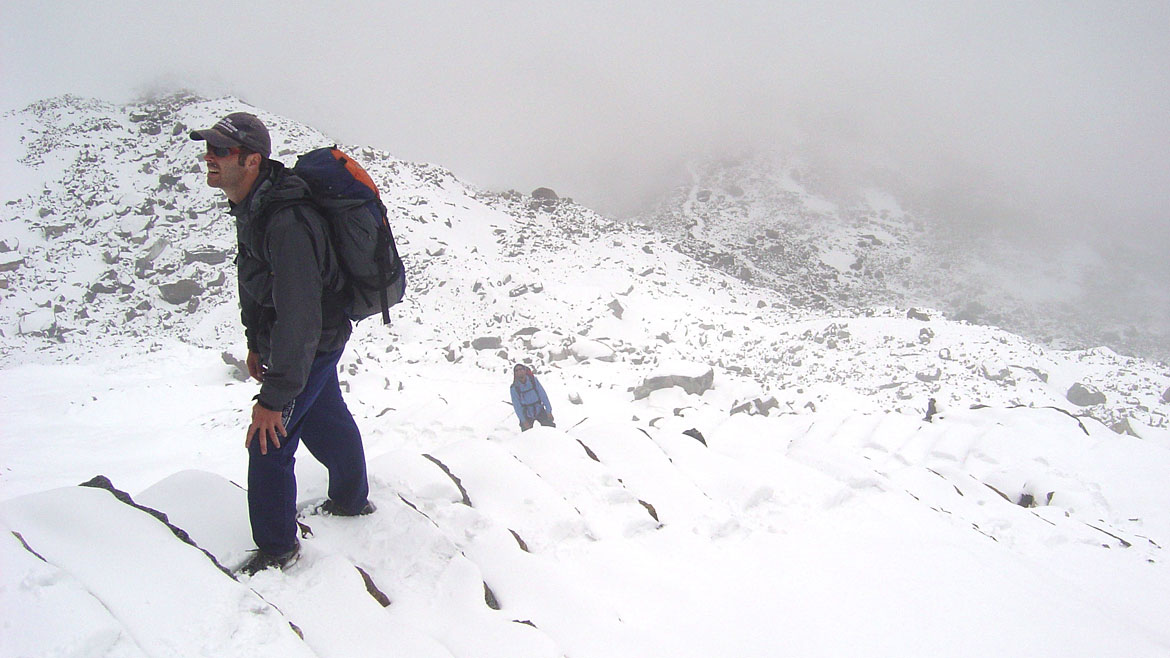
Jason Katz is an LTO on the Carter Center’s roaming team. The roaming team visits the most remote and politically sensitive regions of the country. Here he treks over a mountain pass to reach another village. Nepal hosts not only 59 ethnic groups and 100 living languages, but also five climatic zones ranging from tropical to arctic, as well as three geographic zones ranging from the Terai plains to the highest mountains in the world, the Himalayas. Photo: The Carter Center/John Clayton
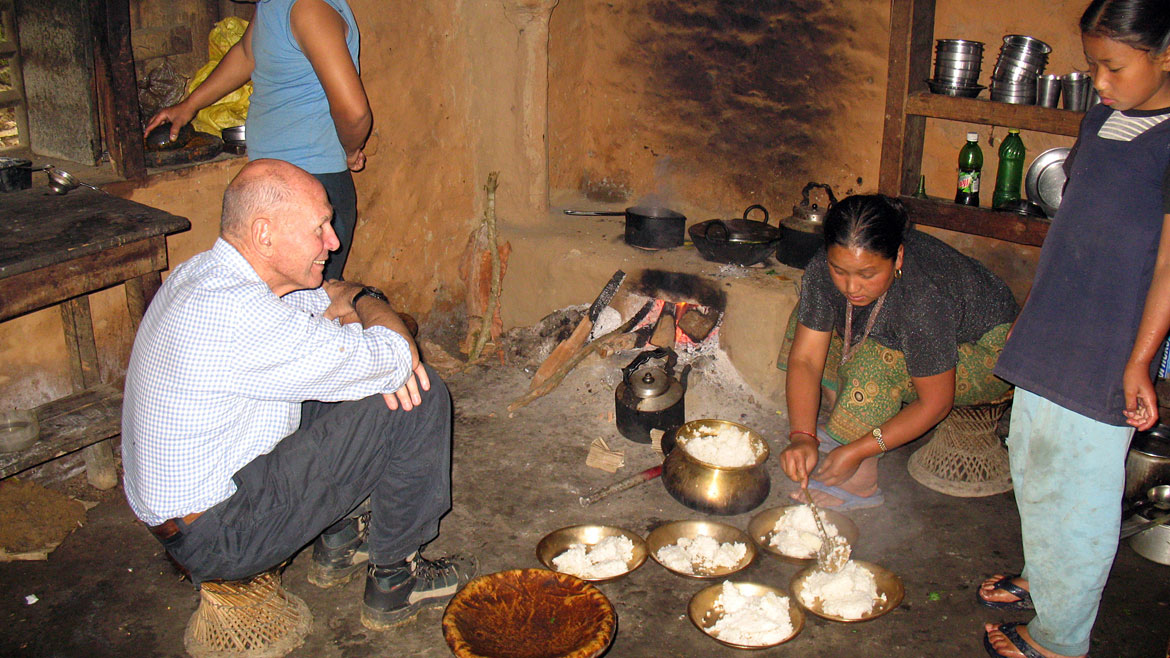
LTO Roger Bryant, team partner of Stefanie Gross, waits as a family prepares Dal–Bhaat, (lentils and rice) a Nepali daily staple, for dinner in a home where they stayed in Nepal’s Eastern Development Region. Finding a place to stay for LTOs often means knocking on someone’s door along the trekking trail. Photo: The Carter Center/Stefanie Gross
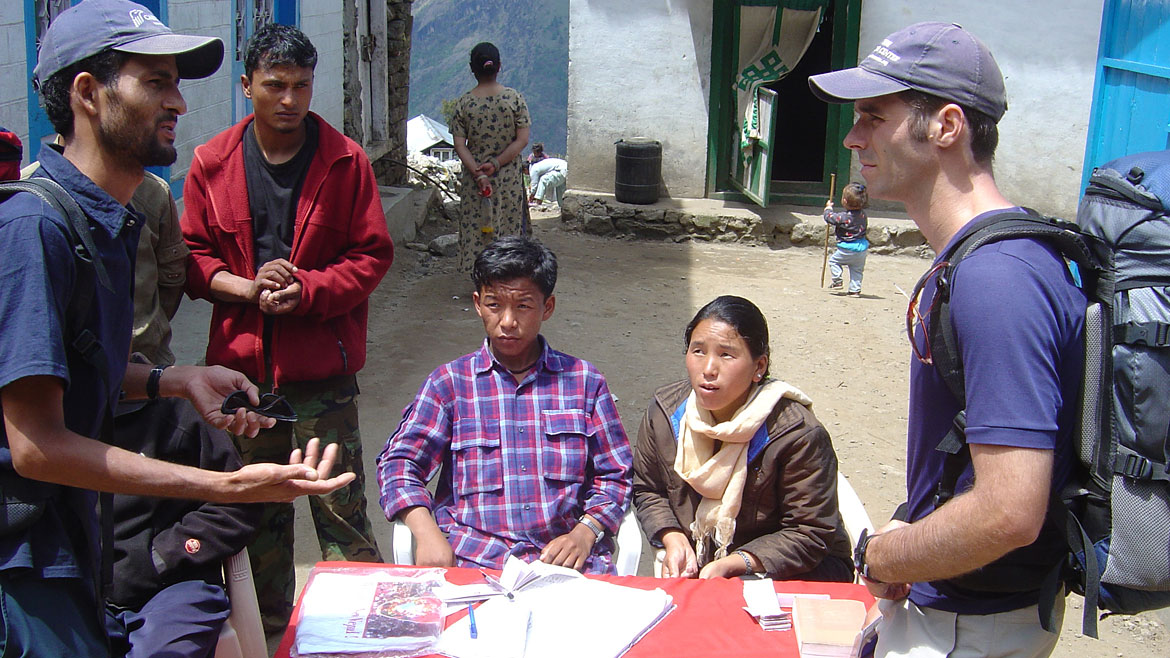
LTO Jason Katz and his interpreter, Kamal Adhikari, talk to Maoists at a checkpoint run by the Young Communist League in Lukla, Solukhumu. The checkpoint was placed to get porters and guides to join their workers union. They were also selling T–shirts to tourists with Maoist Leader Prachanda pictured on them. Porters and guides informed Katz’s team that they felt obligated to pay the fee and join the union. Photo: The Carter Center/John Clayton
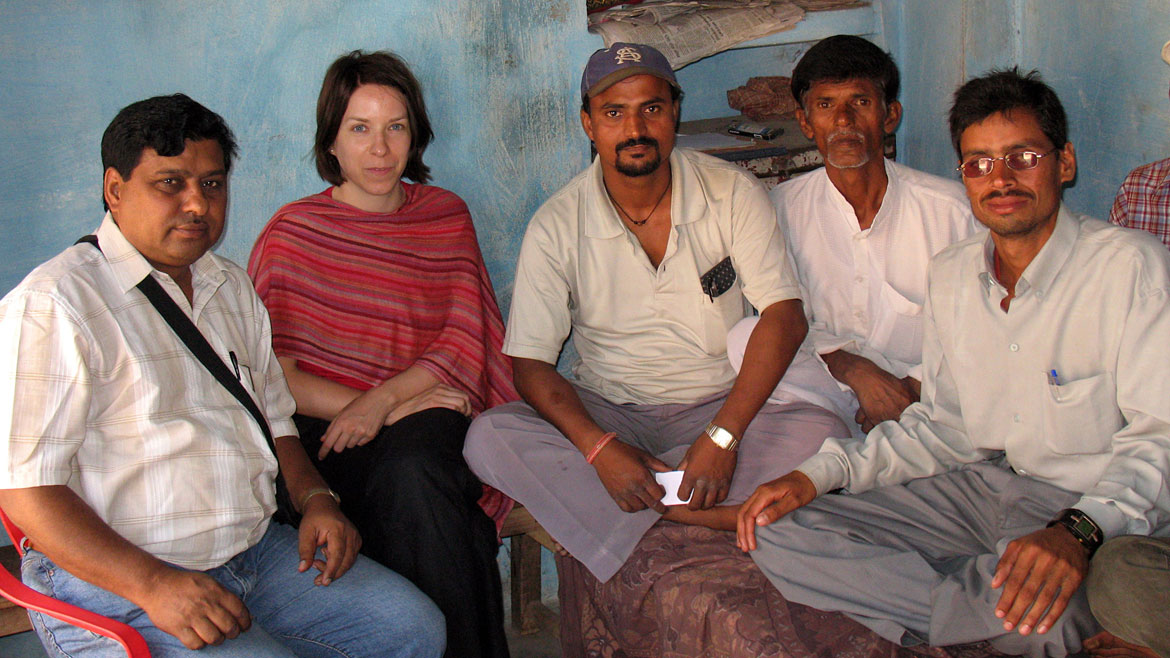
Stefanie Gross and her interpreter, Mr. Panthi, meet with a political party in Saptari, a Terai district in Nepal’s Eastern Development Region. LTOs ask the parties questions regarding their campaign preparations, how they are able to finance themselves, whether their relations with the other parties are holding up, and their level of approval and confidence in the work of the election commission. LTOs also try to get information from those parties involved in specific incidents of violence or foul play. They asses the parties’ ability to operate freely in the district and whether they think the elections will be held in a credible manner. Photo:The Carter Center/Roger Bryant
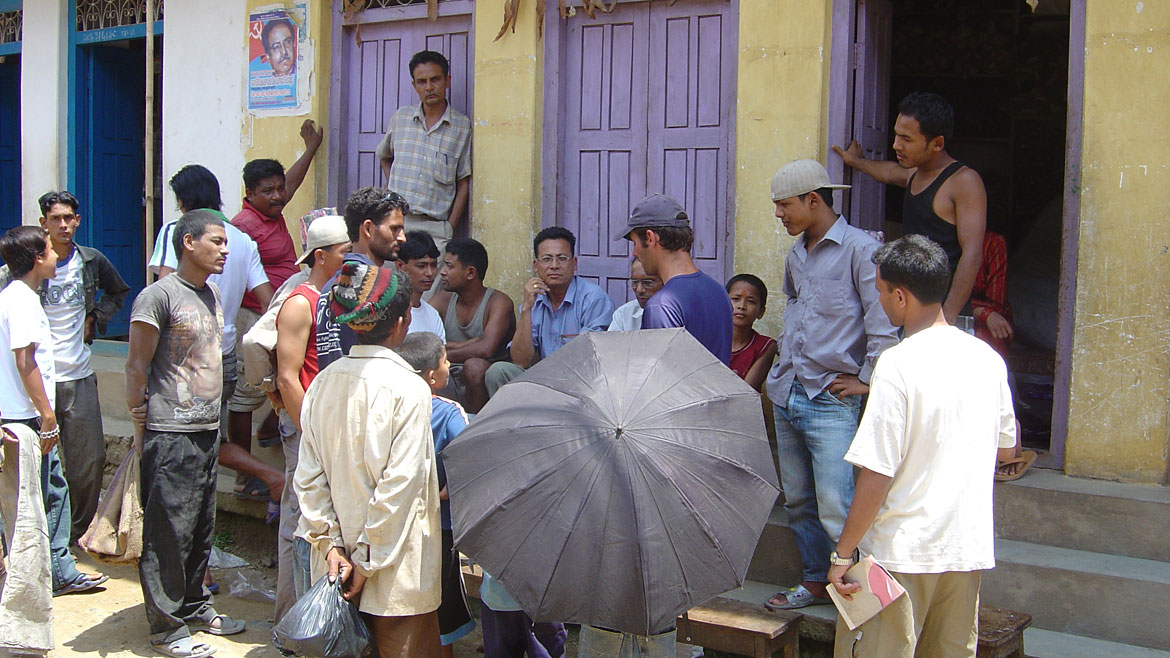
LTO Jason Katz talks with a political party representative as interested onlookers join in the conversation. LTOs often talk with community members and party representatives to ask their impressions of political parties and the elections. Photo: The Carter Center/John Clayton
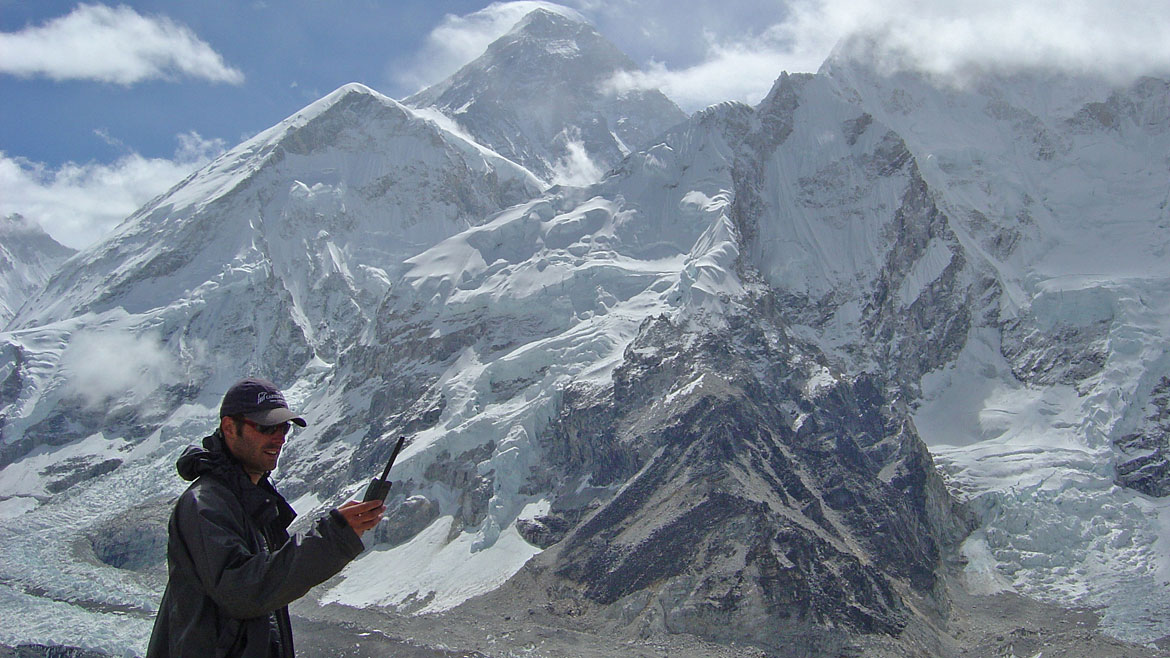
LTO Jason Katz text messages the Carter Center’s field office in Kathmandu on his satellite phone as Mt. Everest looms in the background. LTOs notify the field office of their whereabouts twice a day per the security policy. This is done by mobile phones, landline telephones, and most commonly by satellite phones. Photo: The Carter Center/John Clayton
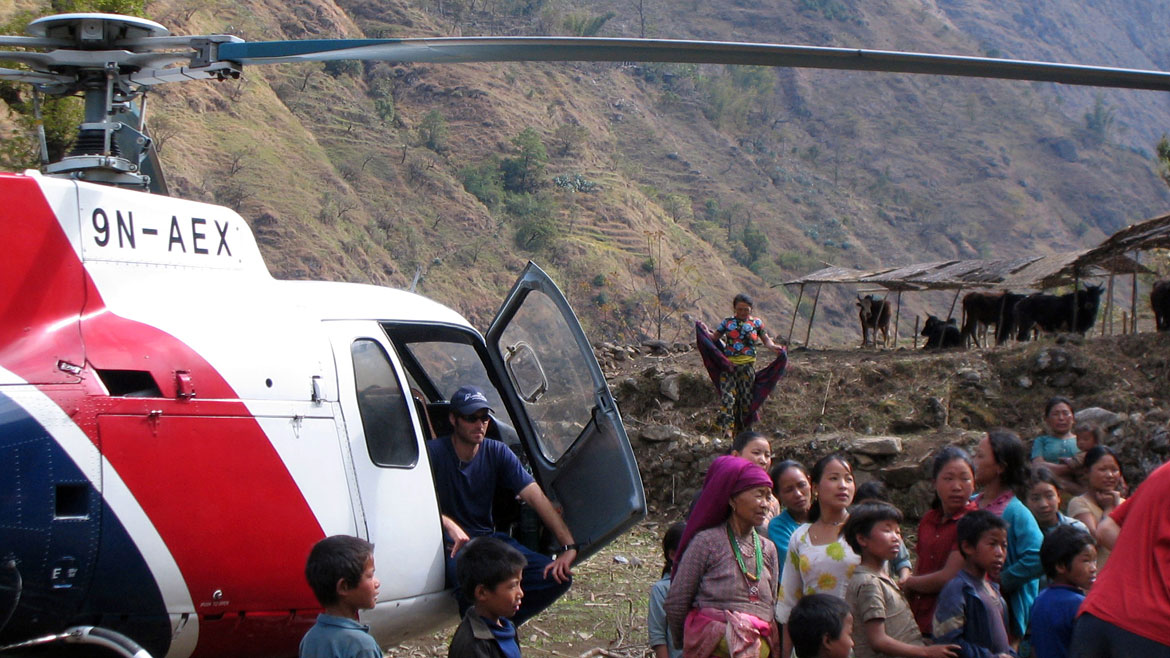
The roaming team often utilizes multiple methods of transport to reach remote villages. LTO Jason Katz and his team partner took a helicopter to the village of Helok in Taplejung District in the Eastern region of Nepal. The entire village came out to see them take off. Photo: The Carter Center/John Clayton
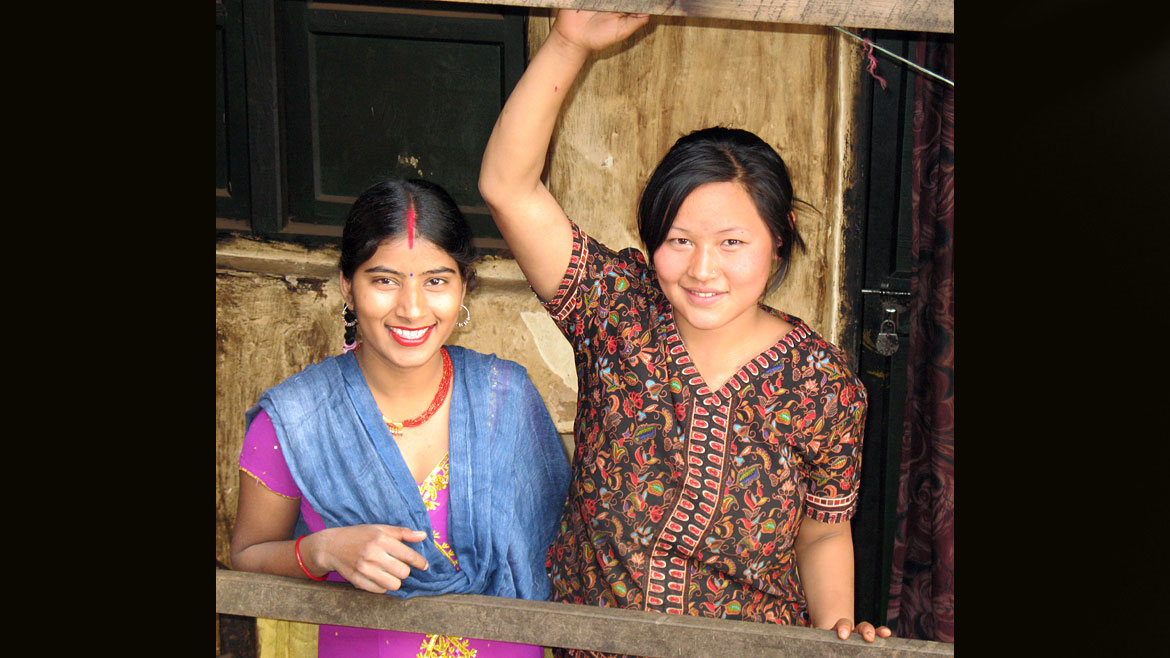
A married woman (left) and her unmarried sister, Bhojpur district. The women were neighbors of LTO Stefanie Gross during a field stay. While conversation was impossible because of the language barrier, they always smiled at each other as they passed by. The photo shows the contrast of married and unmarried women—the girl on the left is wearing the Maang Tikka (red mark on her hair part) and the Mangal Sutra (the necklace) that indicates her status as a married woman, while her sister is undecorated. Photo: The Carter Center/Stefanie Gross
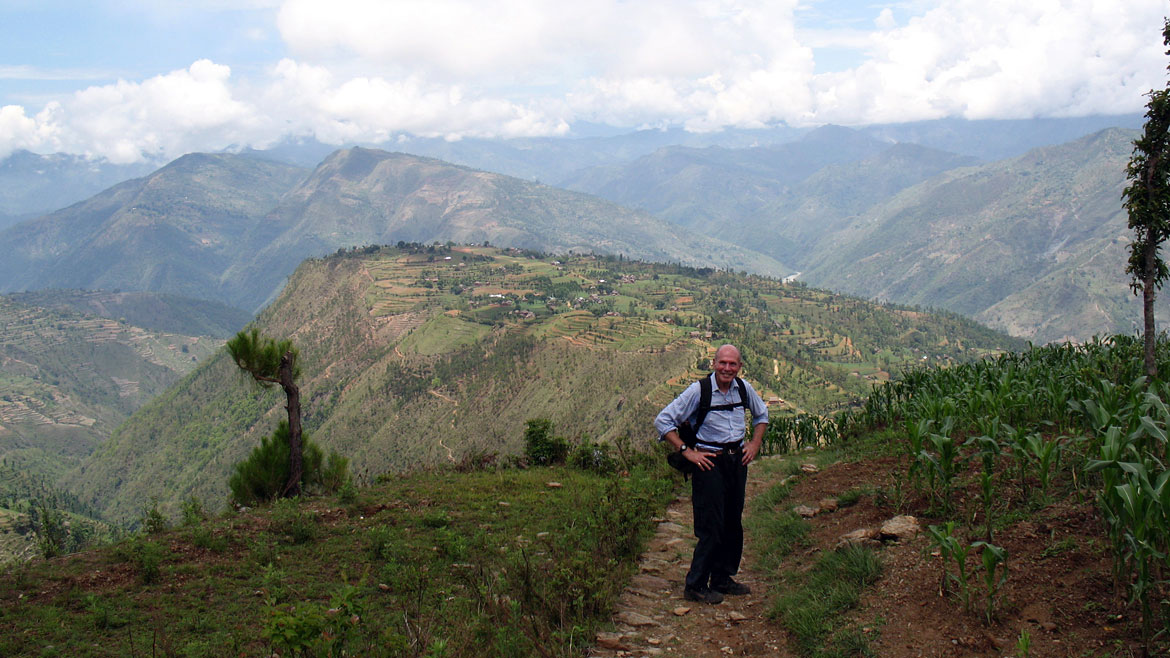
The Carter Center is currently the only international election observation mission in Nepal and the Center’s well–established reputation for professional and impartial observation enables it to gather a wide range of information from diverse actors. Photo: The Carter Center/Stefanie Gross
